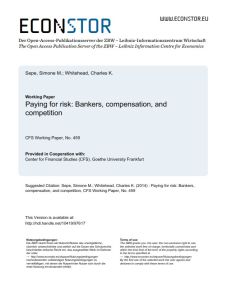加入 getAbstract 阅读摘要

加入 getAbstract 阅读摘要
Simone M. Sepe and Charles K. Whitehead
Paying for Risk
Bankers, Compensation, and Competition
Center for Financial Studies, 2014
看看什么内容?
Restricting bank executives’ pay is misguided. Instead, focus on the competition for banks’ risk takers.
Recommendation
In the rush to crack down on banks’ risk taking after the 2007–2009 financial crisis, politicians and regulators focused on precisely the wrong issue: They restricted pay for bank executives while ignoring the reality that lower-level staff, rather than executives, actually take on the risk. According to legal experts Simone M. Sepe and Charles K. Whitehead, in a competitive market for talent, those employees can sell their services to rival institutions, moving on before their risky bets collapse. getAbstract recommends their report on bank compensation to policy makers, finance leaders and human resources professionals looking to link risk and pay.
Summary
About the Authors
Simone M. Sepe is an associate professor of law at the University of Arizona. Charles K. Whitehead is a law professor at Cornell Law School. This report will appear in Volume 100 of Cornell Law Review.




















Comment on this summary